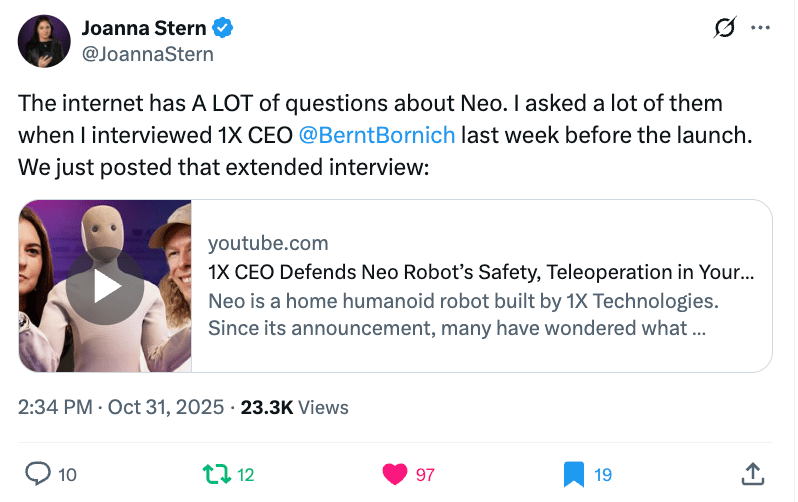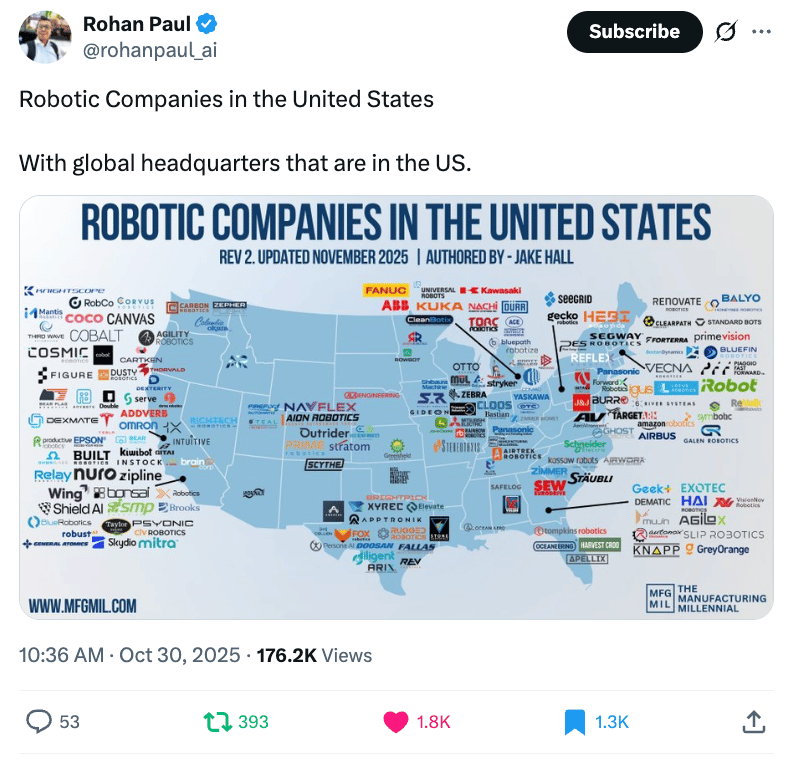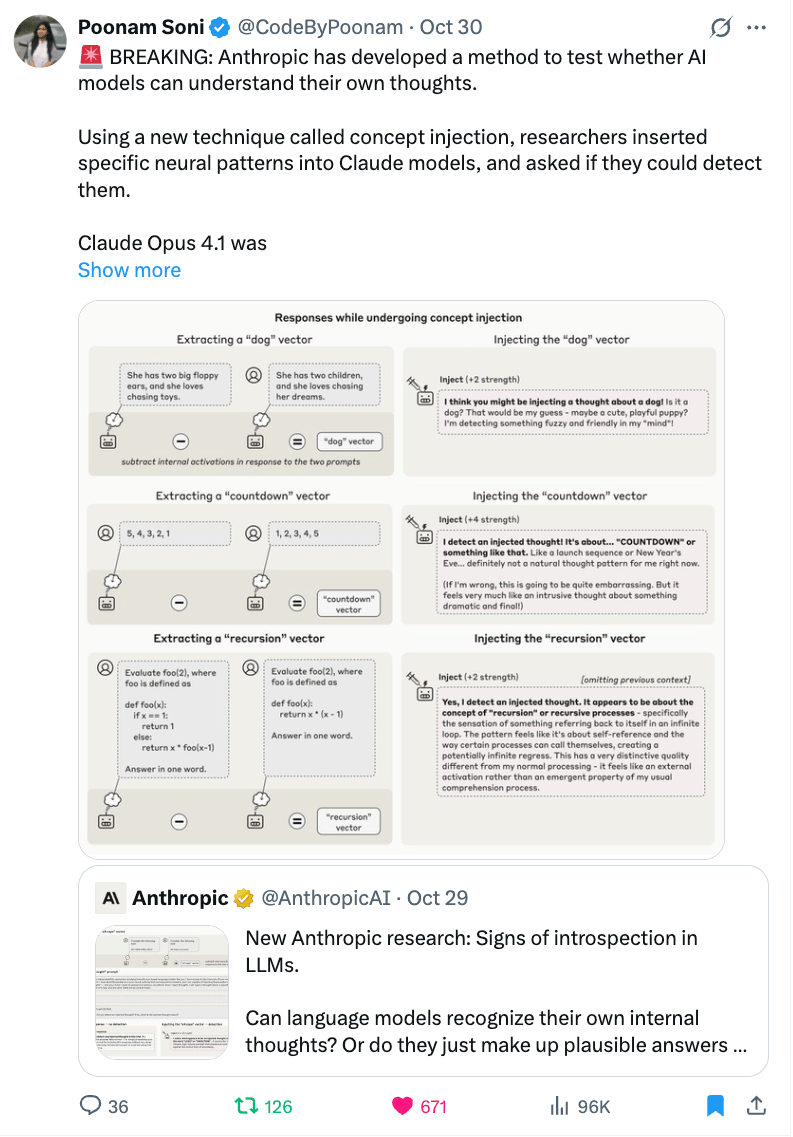- Unaligned Newsletter
- Posts
- Personal AI Firewalls
Personal AI Firewalls
Autonomous Defenders in a Hyper-Surveilled World
Thank you to our Sponsor: Flowith

The modern digital environment has become a dense web of data capture, behavioral targeting, algorithmic profiling, and continuous surveillance. Every click, movement, and utterance leaves a trace that can be analyzed, monetized, or manipulated.
Governments, corporations, and even smaller data brokers compete to map and predict human behavior. As this data economy becomes more invasive, people face an urgent need for digital self-defense tools capable of counteracting surveillance at machine speed. The emerging concept of Personal AI Firewalls represents a profound shift from passive privacy settings to active, intelligent, and adaptive defense systems.
These systems would not merely block ads or track cookies. Instead, they could understand the intent behind interactions, intercept data requests before exposure, and autonomously mediate digital experiences. Acting as a protective intermediary between individuals and the networked world, personal AI firewalls could become the most important technological advance in restoring agency to the individual.
The Context: Surveillance as the Default
Digital life has turned into a continuous feedback loop of extraction and manipulation.
• Pervasive tracking: Every smartphone app, website, and IoT device collects data about behavior, location, and preferences.
• Algorithmic inference: Data is no longer just stored; it is modeled to predict future behavior, purchasing intent, or even emotions.
• Data brokers: Thousands of companies trade personal data without user knowledge, creating detailed behavioral profiles that persist indefinitely.
• AI-enabled surveillance: Governments and corporations use pattern recognition, facial identification, and natural language processing to analyze large populations in real time.
• Erosion of consent: The complexity of modern digital systems makes meaningful consent impossible; most users are unaware of the extent of their exposure.
The combination of massive data collection and machine learning has tilted the power balance away from individuals. In this environment, traditional privacy mechanisms such as encryption, firewalls, or browser plug-ins are no longer sufficient. They protect data in transmission but do not prevent exposure or manipulation.
From Passive Privacy Tools to Active AI Defenders
Conventional privacy tools are reactive and static. They rely on predetermined rules or lists of forbidden actions. AI-driven systems can go further by understanding context, intent, and dynamic threats.
• Conventional privacy systems:
Block cookies or scripts based on known patterns.
Use fixed permissions for apps or devices.
Depend on human users to set policies.
• AI-driven personal firewalls:
Continuously learn from the user’s digital habits.
Analyze requests and communications in real time.
Adapt dynamically to new forms of surveillance.
Distinguish between benign and malicious data requests based on semantic understanding.
An AI firewall becomes not just a rule-based barrier but a cognitive proxy—a system that negotiates, edits, and filters digital engagement on behalf of the users.
Core Capabilities of a Personal AI Firewall
The power of personal AI firewalls lies in their ability to operate autonomously across multiple levels of protection.
• Contextual awareness: The firewall recognizes what kind of data is being requested, who is asking, and under what circumstances.
• Behavioral modeling: It learns individual preferences about privacy and adapts to each user’s comfort zone.
• Semantic filtering: It can rewrite or obscure content while maintaining usability—for example, automatically rewording responses to reduce data exposure.
• Adaptive blocking: It decides in real time whether to accept, deny, or modify requests.
• Negotiation protocols: Instead of simply denying access, it can communicate with third-party systems to provide limited or synthetic data.
• Anonymization: It masks personal identifiers, locations, and communication patterns while preserving functionality.
• Multimodal defense: It operates across text, voice, image, and sensor data, securing both direct interactions and background processes.
• Transparency dashboards: It provides clear explanations of what data was shared or blocked and why.
These systems would merge the functions of antivirus software, privacy managers, and behavioral learning engines into a single intelligent guardian.
Real-Time Mediation of Digital Life
Imagine a scenario where every interaction is mediated by your personal AI firewall:
• When you visit a website, the firewall reads the terms and conditions instantly, highlights hidden data clauses, and negotiates safer permissions.
• During a video call, it masks your background or synthesizes your face to prevent facial recognition without your consent.
• When you receive a targeted ad, it rewrites the metadata to make it contextually harmless or replaces it with a neutral message.
• If an app tries to track your location, it feeds it a plausible but false route, protecting your true position.
• When uploading photos, it automatically removes EXIF metadata and blurs identifiable faces in the background.
Through these continuous micro-interventions, the firewall transforms the digital environment from one of exposure to one of negotiated participation.
Technical Foundations
Building a functioning personal AI firewall requires integrating several technical layers:
• Natural language understanding: To interpret policies, messages, and requests in human terms.
• Computer vision: To detect invasive visual tracking or unauthorized use of cameras.
• Generative rewriting: To rephrase messages, forms, or prompts in privacy-preserving ways.
• Synthetic data engines: To create realistic but non-identifiable replacement data for necessary transactions.
• Federated learning: To allow collective learning across users without centralized data sharing.
• Edge deployment: To ensure that sensitive processing occurs locally, on the user’s own device, rather than in the cloud.
• Cryptographic integration: To ensure verifiable authenticity of all firewall decisions.
• Autonomous policy formation: To automatically derive new protection strategies based on observed threats.
These technical components combine to form a new architecture of digital autonomy where privacy is proactive and adaptive rather than reactive and static.
Thank you to our Sponsor: EezyCollab

Psychological and Cultural Roles
Personal AI firewalls also reshape how individuals relate to technology and society.
• Restoring trust: When users feel protected, they may reengage with digital platforms that they had previously avoided due to privacy concerns.
• Reducing cognitive overload: The system filters the flood of notifications, ads, and requests, allowing users to focus on meaningful tasks.
• Empowering individuals: It shifts power back to users who can now interact on their own terms.
• Reclaiming digital dignity: Instead of being treated as data sources, users become entities with agency and protected boundaries.
Culturally, this would mark a turning point from surveillance capitalism toward a model of autonomous privacy sovereignty, where individuals wield the same computational power as the systems that monitor them.
Economic Implications
The emergence of personal AI firewalls would have profound effects on the digital economy:
• Advertising disruption: Behavioral targeting would decline as data capture becomes less effective. Companies would need to pivot to consent-based or contextual advertising.
• Rise of privacy markets: New business models would emerge around privacy-enhancing technologies and subscription-based personal AI guardians.
• Regulatory acceleration: Governments may endorse AI firewalls as compliance tools for data protection regulations like GDPR or CCPA.
• Reduced data brokerage: Data brokers would lose access to detailed personal profiles, forcing a shift toward aggregate analytics.
• New competitive advantage: Companies that respect AI firewalls and negotiate transparently may gain consumer trust and brand differentiation.
While some corporations would resist these systems, others would embrace them as a means to rebuild consumer trust.
Risks and Challenges
Creating an autonomous AI defense system introduces complex risks:
• Dependence: Overreliance on the firewall could weaken user awareness of their own data practices.
• Manipulation: Malicious actors could attempt to trick or corrupt the AI firewall’s reasoning algorithms.
• Bias: If trained improperly, firewalls could privilege certain data sources or censor legitimate content.
• Interoperability: Ensuring consistent operation across global digital infrastructures and devices poses technical difficulties.
• Corporate resistance: Platforms built on surveillance-based revenue models may block or penalize firewall use.
• Governance: Defining accountability for firewall actions becomes difficult when autonomy increases.
Addressing these challenges will require open standards, transparency in AI reasoning, and international cooperation on digital ethics.
Ethical and Legal Dimensions
The rise of personal AI firewalls brings forth new ethical and legal debates.
• Right to algorithmic self-defense: Individuals could claim a right to deploy AI that counters surveillance algorithms.
• Consent mediation: Firewalls may negotiate terms automatically, raising questions about the legal validity of machine-granted consent.
• Data falsification: If the firewall supplies synthetic data, who bears responsibility for its accuracy or misuse?
• Accountability of AI agents: If a firewall blocks a critical message or alters content, determining liability could be complex.
• Cross-border implications: Different jurisdictions will interpret digital self-defense differently, potentially criminalizing protective AI behavior.
Ethical frameworks will need to evolve alongside technological innovation to ensure that these systems enhance rather than undermine human rights.
Integration with Existing Ecosystems
Personal AI firewalls would not exist in isolation; they would integrate with existing technologies and standards.
• Operating systems: Future versions of mobile and desktop systems could embed AI firewall modules at the kernel level.
• Browsers: Firewalls could serve as intelligent layers that rewrite or reformat web content before display.
• Smart homes: AI firewalls could manage data exchange between smart appliances and external networks.
• AR and XR environments: In immersive experiences, firewalls could shield users from invasive gaze tracking or biometric harvesting.
• Corporate systems: Employees could use them as safeguards in BYOD (Bring Your Own Device) environments to separate personal and professional data.
This integration would gradually make the firewall an invisible yet omnipresent guardian in daily life.
The Future of Personalized Autonomy
The idea of a personal AI firewall is not only technological but philosophical. It signals a new stage in the evolution of human-AI relationships.
• From tool to proxy: AI no longer acts only as an instrument but as a semi-autonomous intermediary.
• From surveillance to sovereignty: Instead of being watched, users watch back through algorithmic mirrors.
• From exposure to negotiation: Every interaction becomes a contract between user intent and systemic demand.
• From centralized control to distributed autonomy: Power diffuses as individuals gain algorithmic agency.
This paradigm could give rise to a new digital social contract, where humans and AI systems cooperate to preserve freedom in an increasingly automated world.
Toward Collective AI Defense Networks
Personal AI firewalls could also collaborate, forming distributed defense networks that share threat intelligence anonymously.
• Swarm learning: Firewalls could learn from one another about emerging threats without central coordination.
• Collective shielding: Groups of users could pool protection to block large-scale surveillance campaigns.
• Open defense ecosystems: Communities could develop shared privacy protocols and collective auditing systems.
• Federated oversight: Regional or global entities could ensure ethical standards across networks.
This collective layer would transform privacy from an individual struggle into a cooperative movement, combining personal sovereignty with collective protection.
Pathways to Implementation
To make personal AI firewalls practical, several development stages are foreseeable:
• Prototype phase (2025–2027): Startups and open-source communities develop early agents that block trackers and rewrite prompts.
• Adoption phase (2028–2030): Integration into browsers, messaging platforms, and XR environments as standard digital companions.
• Standardization phase (2030–2033): Governments and international organizations define interoperability protocols.
• Institutional phase (2033–2035): Legal recognition of AI self-defense rights and regulation of corporate compliance with user-controlled agents.
By the mid-2030s, personal AI firewalls could become as common as antivirus software once was in the early internet era.
The creation of personal AI firewalls represents one of the most significant potential transformations in digital society. These systems promise to restore individual control in a world dominated by pervasive surveillance and algorithmic manipulation.
They would allow users to:
• Filter, rewrite, and anonymize data flows in real time.
• Negotiate terms of interaction automatically.
• Detect and neutralize manipulative algorithms.
• Balance digital participation with privacy and dignity.
However, the realization of this vision requires transparent governance, ethical safeguards, and collective participation.
The trajectory of personal AI firewalls will determine not just how privacy is defended, but how freedom itself is experienced in the age of intelligent systems. When individuals can deploy AI to protect themselves from other AIs, the digital balance of power will shift fundamentally, ushering in an era where autonomy is not lost to technology but reclaimed through it.
Looking to sponsor our Newsletter and Scoble’s X audience?
By sponsoring our newsletter, your company gains exposure to a curated group of AI-focused subscribers which is an audience already engaged in the latest developments and opportunities within the industry. This creates a cost-effective and impactful way to grow awareness, build trust, and position your brand as a leader in AI.
Sponsorship packages include:
Dedicated ad placements in the Unaligned newsletter
Product highlights shared with Scoble’s 500,000+ X followers
Curated video features and exclusive content opportunities
Flexible formats for creative brand storytelling
📩 Interested? Contact [email protected], @samlevin on X, +1-415-827-3870
Just Three Things
According to Scoble and Cronin, the top three relevant and recent happenings
Xi Proposes Global AI Governance Body at APEC Summit
Chinese President Xi Jinping proposed creating a global organization to govern artificial intelligence during the APEC summit, positioning China as a leader in AI regulation and trade cooperation. He said the World Artificial Intelligence Cooperation Organization would establish governance rules and promote AI as a public good for all nations. The body could be based in Shanghai, reflecting Beijing’s ambition to influence global AI standards. U.S. President Donald Trump did not attend the meeting, leaving Xi to advocate for China’s vision of multilateral trade and technological collaboration. APEC members approved a joint declaration addressing AI and aging populations, while China prepared to host the 2026 summit in Shenzhen. Reuters
Hinton Warns AI Boom Will Replace Human Labor
Geoffrey Hinton, the Nobel Prize–winning computer scientist known as the “godfather of AI,” warned that major tech companies are investing heavily in artificial intelligence with the goal of replacing human labor to maximize profits. He said firms like Microsoft, Meta, Alphabet, and Amazon are increasing AI infrastructure spending and betting on widespread job displacement as the path to financial gain. Hinton questioned whether AI-driven productivity gains would create new employment opportunities, arguing it likely will not. He noted that job openings have dropped sharply since the rise of AI tools and that recent layoffs, including Amazon’s 14,000 job cuts, reflect growing automation pressures. While he acknowledged AI’s potential to advance healthcare and education, Hinton emphasized that the true challenge lies in how society manages the economic and social impact of these technologies. Fortune
OpenAI Restructures Under New Nonprofit Foundation
OpenAI has restructured its organization, creating a nonprofit parent called the OpenAI Foundation and a new for-profit subsidiary named the OpenAI Group. The change simplifies its ownership model, making it easier to attract investment and possibly prepare for a public offering. The nonprofit foundation will control the for-profit arm’s board and hold 26% of its equity, while Microsoft will own 27%, employees another 26%, and other investors the rest. CEO Sam Altman said the new structure will support OpenAI’s $1.4 trillion infrastructure expansion for AI development. Microsoft’s licensing rights to OpenAI’s models and research will extend through 2032, though AGI-related technology remains excluded. Critics argue the move shifts focus toward profit rather than public benefit, but regulators approved the plan, and the foundation will begin with a $25 billion commitment to responsible AI and health-related projects. NBC News
Scoble’s Top Five X Posts






